In competitive sports and physical activity, the risk of injury is an ever-present concern1. As a part of a comprehensive athletic development program, robust injury management systems and effective return to play strategies are crucial for athletes of all ages and skill levels. Return to play (RTP) can be defined as the criteria-based progression to medical clearance from injury, with continued criteria-based decisions to ensure availability for competition and performance, while simultaneously mitigating the risk of re-injury. This article outlines the journey towards complete recovery, highlighting the key aspects of injury management and how a smooth reintegration into competitive play can be facilitated.
Figure 1. Return to Play Model Overview.

LEVEL 1: Initial Injury Management – Balancing Action and Rest
Introduction
In the career of an athlete, sports injuries are all but inevitable due to the physical demands on their bodies. The management of both acute and chronic injuries requires a systematic approach to ensure the best recovery, as poor management can extend recovery time and increase reinjury risk2, greatly affecting an athlete’s career. Critical strategies for injury management include relative rest, promotion of tolerable movement, and inflammation/swelling control. This section will guide coaches and athletes in effectively implementing these strategies for acute sports injuries.
Phase 1 – Promote healing.
Once immediate first aid or critical medical care has been administered, the initial phase towards recovery and return to sport involves managing the initial pain and discomfort, safeguarding the injury site, minimizing inflammation, and sustaining at least minimal levels of physical activity.
Relative rest & tolerable movement
The initial response to an injury should include a period of relative rest, typically between 1-3 days (depending on injury severity), in order to calm things down. This primarily means limiting actions that could worsen the injury. However, this doesn’t imply total immobility. Absolute immobilization might weaken the muscles around the injured area and extend the healing timeframe3. The aim is to balance complete rest and acceptable physical motion. Basically, keep the individual active by engaging in activities that avoid further injury4. Movement, within manageable limits, is critical for maintaining blood flow and mobility, which can expedite the healing process5.
Minimizing swelling
Swelling is frequently observed as a side effect of injuries. While it may appear alarming, it is simply the body’s natural reaction to injury. Nevertheless, managing swelling effectively is crucial, as excessive swelling may hinder recovery and could lead to more serious complications6.
Historically, ice has been a common method used to reduce swelling. However, recent research suggests it may not be as effective as previously thought. The low temperature can affect blood circulation and potentially delay the healing process7.
There are several alternatives to ice that can be used for the management of swelling8. These include:
- Aerobic exercise: This aids in boosting blood circulation and can help reduce swelling caused by an excessive buildup of fluid.
- Resistance exercises: Exercises, which should be undertaken as per the individual’s pain tolerance, that target local muscle groups which can stimulate muscle contractions to help shift accumulated fluid in swollen areas back into the bloodstream.
These methods, which can be combined with occasional compression and elevation, can contribute to a smoother recovery process and improved outcomes.
Phase 2 – Restore range of motion.
Following an injury, after the pain and swelling have decreased, it’s imperative for athletes to begin light workouts focused on restoration of flexibility and mobility9. The aim is to improve joint range of motion and tissue extensibility without exacerbating the injury. Working to quickly reclaim an athlete’s pre-injury range of motion not only maintains the functionality of the injured area but can also speed up recovery10. Starting gentle motion early, by means of safe, pain free stretching and mobility exercises, along with controlled, low speed movements with light or no load enhances the strength and elasticity of damaged tissues and can prevent excessive scar formation11. Starting movement early, even if limited, improves the recovery outcome.
Phase 3 – Restore neuromuscular control.
Neuromuscular control is the capacity to regulate movement through synchronized muscle work, a conditioned unconscious response to a signal for joint stability12. It’s the combined effort of the nervous and muscular systems to orchestrate and manage physical movements. An athlete can lose neuromuscular control after an injury13, observing reduced balance, movement skill, joint control, and range of motion, as well as weaker muscular strength.
Restoring neuromuscular control involves reeducating the body for efficient movement14, essential for optimal joint function. After an injury, the brain might be unable to accurately perceive the position of joints, necessitating retraining for reducing further injury risk12. This process teaches the nervous system and muscles how to operate synergistically again, lowering re-injury risk.
Neuromuscular re-education involves training the brain using specific neuromuscular exercises that develop balance, stability, and postural control during dynamic movement15,16. The primary focus is to improve the quality and control of joint movement, not just its quantity or force production capability. This training should involve performing functional movement patterns within a multisensory environment17. The exercises should progress gradually from slow to fast, simple to complex movements, and from unilateral movements to bilateral. Both eyes open and eyes closed movements are also incorporated in the progression depending on the exercise18.
Conclusion
Early-stage injury management for athletes is not a simple, one-size-fits-all methodology but rather, it is tailored to each individual athlete’s recovery rate, type and severity of injury, physical fitness level, and sport. It is advised to get professional medical advice immediately to help establish a strong rehabilitation process. Ultimately, remember that the body has an amazing ability to repair itself over time with the right care and patience.
LEVEL 2: Return to Activity – Mastering Functional Movements and Enhancing Physical Qualities After Injury
Introduction
Injuries in sports can trigger a cascade of physiological and psychological changes19, demanding extensive rehabilitation for the athlete to return to their pre-injury performance level. This stage begins when initial concerns with the injury are reduced, initial treatment and management have been completed, and pain mitigated for most circumstances. Despite the previous points, this level has the greatest risk of set back if not progressed appropriately. This section delves into the integral components of early to mid-stage rehabilitation – further improvements in neuromuscular function, re-establishing functional movement patterns, and the development of general and specific physical qualities.
Phase 1: Establish functional movement patterns.
After a sports injury, the body often compensates by altering movement patterns which may lead to undue stress on other tissues and, ultimately, other injures20,21. As such, reestablishing (and often improving) original movement patterns becomes vital to rehabilitation. This stage involves shifting the primary focus from restoring neuromuscular control to more global functional movements – those which engage multiple joints and muscles simultaneously. It involves appropriate foundational bodyweight and low load exercises and the relearning of basic movements like walking, running, jumping, throwing and even normal activities of daily life (depending on the nature of the sport and injury)21,22. These basic movements form the basis for more complex, sport-specific skills.
By addressing these functional movement patterns, any abnormalities resulting from the injury can be resolved, and begin to see athletes regaining movement control, dynamic stability, general strength, and mobility, and further improving neuromuscular control and coordination23. The key objective is to restore function and capacity, ensuring the injured area can handle load, preparing for more advanced training in later phases of rehabilitation. Reestablishing functional movement post sports injury is vital, with a focus not only on return to play, but on creating a stronger, more resilient athlete.
Phase 2: General development of physical qualities.
After regaining neuromuscular control and foundational movement patterns after injury, the next phase focuses on enhancing general physical qualities such as strength and hypertrophy, power, change of direction ability, and both muscular and cardiovascular endurance24. It involves more strenuous exercises that target multiple muscle groups and require higher skill levels. The aim is to restore the athlete’s strength and general fitness to pre-injury levels, forming a foundation for further sport-specific development.
Strength and power are both essential characteristics for athletes25. Resistance exercises can reinforce these traits by restoring muscle mass and promoting collagen synthesis, thereby boosting structural integrity of tendons and ligaments. Power, a combination of strength and speed, is particularly important as most sports require quick, explosive actions26. In the context of sports injury rehabilitation, power training should be gradually incorporated, starting with light, rapid movements and progressively increasing in volume, intensity, and complexity.
Change of direction ability is crucial in most sports and thus requires effective rehabilitation exercises27. The aim is to enhance an athlete’s movement accuracy, leg strength, explosive power, and speed to ensure smooth and precise directional changes with minimal speed loss. Muscular and cardiovascular endurance training are essential for athletes to develop to resist fatigue during prolonged exertion periods and should be trained appropriately based on the demands of the athletes’ sport28.
Phase 3: Specific development of physical qualities.
After the general development phase, an athlete progresses to specific development that involves special physical preparedness exercises. These exercises more closely resemble the specific movements and requirements of the athlete’s sport and position, a concept termed as dynamic correspondence29. The higher the dynamic correspondence, the more beneficial the training as there is a direct transfer of physical and coordinative skills into game performance. Essentially, sport-specific exercises serve as a bridge from clinical rehabilitation to return to sport. Additionally, they provide psychological benefits by boosting athlete’s confidence and motivation.
When creating drills and exercises within this phase, Matt Taberner’s concept of the control-chaos continuum will be utilized30. This continuum represents a spectrum ranging from controlled, predictable movements (control end) to unplanned, unpredictable movements (chaos end). According to Taberner, rehabilitation should start at the control end, gradually progressing towards the chaos end, which more closely replicates the dynamics of sports (such as unpredictability, rapid decision making, and mental pressure).
The specific development of physical qualities in the rehabilitation process is not just about healing; it’s about re-optimizing performance. This process involves a series of multi-faceted strategies, wherein each is customized according to an individual athlete’s requirements, the sporting discipline, and the nature of the sustained injury. Interweaving structured and chaotic movement stages and maintaining high dynamic correspondence will assure an effective rehabilitation process and a smoother return to the respective sport.
Conclusion
For athletes, returning to activity isn’t just about dusting themselves off and getting back onto the field or into the weight room. It involves a strategic methodology, moving through established steps with criteria-based progression31. Rushing these steps will likely be detrimental rather than beneficial. It’s important to keep in mind that patience and perseverance will eventually lead back to optimal performance levels, transforming into an athlete with enhanced strength and resilience.
LEVEL 3: Return to Sport – A Guide to Mid-to-Late-Stage Athletic Injury Rehabilitation
Introduction
Beyond restoring basic function and the necessary general and specific physical qualities, there needs to be considerable focus on guaranteeing a safe and effective reintegration into the competitive environment. This section discusses the systematic progression of mid-to-late-stage return to play, covering aspects such as preparation for physical testing, returning to modified practice, and ultimately transitioning to full practice.
Phase 1: Physical testing preparation.
After the initial stages of injury rehabilitation, an athlete requires time to prepare for demanding physical tests32. These tests, designed to measure maximal outputs of relevant physical traits, may include activities associated with their injury. The results are then used to assess the athlete’s readiness to return to their sport33. Analysis of sport-specific needs determines these tests, ensuring they align with team standards wherever possible. Athletes will progressively practice these tests, starting at a submaximal level and gradually reaching maximal efforts34. If at least minimum standards are not met (preferably those set pre-injury), a goal-setting meeting will be initiated. This involves developing new strategies and establishing a realistic timeline to pass these tests35.
Phase 2: Sport preparation (limited practice).
Once an athlete passes their physical tests, they can resume limited practice. The training now moves towards sport-specific preparation, which combines technical skills, tactical components, and further physical development in a sport context.
In this phase, awareness (and manipulation) of environmental, task, and organism constraints plays a crucial role – a ‘constraints led approach’36. Environmental constraints relate to the sports practice conditions like weather, field characteristics, and social factors. Athletes, post-injury, need to adapt slowly back to these conditions. Task constraints cover the rules, equipment, and demands of the sport that impacts an athlete’s performance and injury risk. Organism constraints are athletes’ individual differences, like injury history, skill level, psychological state, and physical abilities. All these factors are essential while formulating a return-to-play program37.
Phase 3: Competition preparation (full practice).
Returning to full practice (competition preparation) is the stage after the athlete has sufficiently exhibited tolerance to regular, albeit modified, practices and successfully reestablished their technical skills and tactical aptitude. In this phase, athletes can engage wholly in team practice, excluding scrimmages. Though this doesn’t mean clearance for full competition, this stage is invaluable for judging whether the athlete has reached pre-injury levels of competitive performance. An athlete can return to competitive play only after proving their capabilities at this level.
Full integration back into team practices post-injury is beneficial in various ways; it sharpens the potentially dulled technical skills and capabilities of the athlete, assists athletes in re-establishing team dynamics, and reinforces their tactical understanding of the team’s style of play37. Another significant merit is the maintenance of sport-specific fitness, ensuring the combination of physical qualities only trainable by playing the specific sport are kept in check38. Lastly, full practice participation restores the athletes’ confidence in their performance abilities and physical health, which often suffers after an injury.
Conclusion
Returning to sport after an injury is a multi-stage process that requires the athlete to be patient and work closely with rehabilitation professionals, strength and conditioning specialists, and sports coaches. It involves physical testing, careful reintroduction and exposure to the demands of the sport, and competition preparation. The process should always be individualized, focusing on the athlete’s well-being, safety, and sports-specific needs. By following this approach, athletes may be able to return to their required performance level more quickly and safely, while reducing the risk of further injuries. Hence, following a structured return to sport process should be considered a mandatory step for every athlete looking to bounce back from an injury.
LEVEL 4: Return to Competition – The Final Phase of Sports Injury Rehabilitation & Ensuring a Successful Return to Competitive Play
Introduction
The final phase of sports injury rehabilitation – return to competition – is a critical step that requires careful planning, execution, and monitoring. This process involves gradually reintegrating athletes back into their full competitive sport demands, effectively transitioning the athlete almost completely out of the sports injury rehabilitation program. Key elements discussed in the section will include the importance of a gradual return to competitive play, continual reevaluation of the athlete relative to their return-to-competition criteria, and the necessity of embedding ongoing injury risk management strategies.
Phase 1: Competitive play.
In this phase, athletes should increase competitive loading progressively (measured in exposure minutes, heart rate, and/or distance metrics) with regular risk factor reassessments. This helps their body adapt and reduce chances of re-injury. Additionally, the acute:chronic workload ratio should be monitored, showing the difference between an athlete’s recent and long-term workloads39. It’s a useful gauge of their capacity to withstand competitive stresses and helps determine whether their recent activity levels are in line with their long-term workload40. The continuous monitoring and evaluation of these parameters, in conjunction with other return to play criteria, can prevent unexpected setbacks. Furthermore, if an athlete falls below their post-clearance baselines, decisions must be made on how to modify the current strategies.
To acclimatize an athlete to competition, a progressive increase in their competitive playtime is required, factoring in decisions on competitive minutes and establishment of red flag criteria to halt their playing time if needed. The process could start with brief game appearances, progress to extended durations off the bench, evolve into full game segments (halves, quarters, etc.), and then return to full games.
Phase 2: Re-evaluation of return to competition criteria.
This phase runs in parallel with phase 1, involving periodic reassessment of the athlete’s performance capability, along with their physical and psychological condition. If the athlete fails to meet their return-to-competition criteria due to injury exacerbation or because of progression errors in training load (doing too much too soon)41, a gameplan will need to be developed to ensure continued progress.
Phase 3: Re-injury risk mitigation strategies.
Phases 2 and 3 operate on a continual, on-going loop with no end point in order to reduce future injury risk, as getting back to full competitive play does not mean forgetting about the injury. Rehabilitation is about long-term vigilance and the adoption of strategies to prevent any recurrence42. Physical maintenance, such as participating in a consistent strength and conditioning program and keeping on top of exercises designed to prevent reinjury of the specific tissue, are key parts of the puzzle43. Maintaining regular checkups to monitor injury status and global/systemic health, ensuring good nutrition44, and getting sufficient rest also serve as shields against re-injury45. The overall goal here, and with the entire process thus far, is to return to play and keep playing.
Conclusion
Returning to competitive play not only involves ensuring that the injury has healed, but also requires a smart and specialized strategy for reintroduction to training demands. There should be continual reevaluation of the criteria for returning to competition, and implementation of long-term injury risk reduction methods. Taking a comprehensive view of health and performance prospects provides a solid foundation for a successful and injury-free sports career.
References
- Arpit, M. (2014). Common Sports Injuries: Incidence and Average Charges. US Department of Health and Human Services:(ASPE Office of Health Policy).
- Greenberg, E. M., Greenberg, E. T., Albaugh, J., Storey, E., & Ganley, T. J. (2018). Rehabilitation practice patterns following anterior cruciate ligament reconstruction: a survey of physical therapists. Journal of Orthopaedic & Sports Physical Therapy, 48(10), 801-811.
- Oldmeadow, L. B., Edwards, E. R., Kimmel, L. A., Kipen, E., Robertson, V. J., & Bailey, M. J. (2006). No rest for the wounded: early ambulation after hip surgery accelerates recovery. ANZ journal of surgery, 76(7), 607-611.
- Brucker, A. (2005). The Updated Cochrane Review of Bed Rest for Low Back Pain and Sciatica. manuelletherapie, 9(04), 189-190.
- Sorrenti, S. J. (2006). Achilles tendon rupture: effect of early mobilization in rehabilitation after surgical repair. Foot & ankle international, 27(6), 407-410.
- Peake, J. M., Neubauer, O., Della Gatta, P. A., & Nosaka, K. (2017). Muscle damage and inflammation during recovery from exercise. Journal of applied physiology.
- Wang, Z. R., & Ni, G. X. (2021). Is it time to put traditional cold therapy in rehabilitation of soft-tissue injuries out to pasture?. World journal of clinical cases, 9(17), 4116.
- Dubois, B., & Esculier, J. F. (2020). Soft-tissue injuries simply need PEACE and LOVE. British journal of sports medicine, 54(2), 72-73.
- Chinn, L., & Hertel, J. (2010). Rehabilitation of ankle and foot injuries in athletes. Clinics in sports medicine, 29(1), 157-167.
- Wang, H. N., Huang, Y. C., & Ni, G. X. (2020). Mechanotransduction of stem cells for tendon repair. World journal of stem cells, 12(9), 952.
- Dunn, S. L., & Olmedo, M. L. (2016). Mechanotransduction: Relevance to physical therapist practice—Understanding our ability to affect genetic expression through mechanical forces. Physical therapy, 96(5), 712-721.
- Pietrosimone, B. G., McLeod, M. M., & Lepley, A. S. (2012). A theoretical framework for understanding neuromuscular response to lower extremity joint injury. Sports health, 4(1), 31-35.
- Hung, Y. J. (2015). Neuromuscular control and rehabilitation of the unstable ankle. World journal of orthopedics, 6(5), 434.
- Herteil, J., & Denegar, C. R. (1998). A rehabilitation paradigm for restoring neuromuscular control following athletic injury. International Journal of Athletic Therapy and Training, 3(5), 12-16.
- Zech, A., Hübscher, M., Vogt, L., Banzer, W., Hänsel, F., & Pfeifer, K. (2010). Balance training for neuromuscular control and performance enhancement: a systematic review. Journal of athletic training, 45(4), 392-403.
- Hewett, T. E., Paterno, M. V., & Myer, G. D. (2002). Strategies for enhancing proprioception and neuromuscular control of the knee. Clinical Orthopaedics and Related Research®, 402, 76-94.
- Cholewicki, J., Greene, H. S., Polzhofer, G. K., Galloway, M. T., Shah, R. A., & Radebold, A. (2002). Neuromuscular function in athletes following recovery from a recent acute low back injury. Journal of Orthopaedic & Sports Physical Therapy, 32(11), 568-575.
- Kountouris, A., & Cook, J. (2007). Rehabilitation of Achilles and patellar tendinopathies. Best practice & research clinical rheumatology, 21(2), 295-316.
- Ivarsson, A., Johnson, U., Andersen, M. B., Tranaeus, U., Stenling, A., & Lindwall, M. (2017). Psychosocial factors and sport injuries: meta-analyses for prediction and prevention. Sports medicine, 47, 353-365.
- Smeets, A., Verheul, J., Vanrenterghem, J., Staes, F., Vandenneucker, H., Claes, S., & Verschueren, S. (2020). Single-joint and whole-body movement changes in ACL athletes returning to sport. Med Sci Sports Exerc, 52(8), 1658-1667.
- Fortenbaugh, D., Fleisig, G. S., & Andrews, J. R. (2009). Baseball pitching biomechanics in relation to injury risk and performance. Sports health, 1(4), 314-320.
- Gaudette, L. W., Bradach, M. M., de Souza Junior, J. R., Heiderscheit, B., Johnson, C. D., Posilkin, J., … & Tenforde, A. S. (2022). Clinical Application of Gait Retraining in the Injured Runner. Journal of Clinical Medicine, 11(21), 6497.
- Comerford, M. J., & Mottram, S. L. (2001). Functional stability re-training: principles and strategies for managing mechanical dysfunction. Manual therapy, 6(1), 3-14.
- Schiffer, J. (2009). Rehabilitation of sports injuries. Rehabilitation, 24(2), 7-20.
- Suchomel, T. J., Nimphius, S., Bellon, C. R., & Stone, M. H. (2018). The importance of muscular strength: training considerations. Sports medicine, 48, 765-785.
- Turner, A. N., Comfort, P., McMahon, J., Bishop, C., Chavda, S., Read, P., … & Lake, J. (2020). Developing powerful athletes, part 1: Mechanical underpinnings. Strength & Conditioning Journal, 42(3), 30-39.
- Young, W., & Farrow, D. (2006). A review of agility: Practical applications for strength and conditioning. Strength & Conditioning Journal, 28(5), 24-29.
- Stokes, K. A., Jones, B., Bennett, M., Close, G. L., Gill, N., Hull, J. H., … & Cross, M. (2020). Returning to play after prolonged training restrictions in professional collision sports. International journal of sports medicine, 41(13), 895-911.
- Laakso, L. A., & Schuster, J. G. (2021). Dynamic Correspondence of the Hang Power Clean to Skating Starts in Men’s Ice Hockey. Strength & Conditioning Journal, 43(4), 1-8.
- Taberner, M., Allen, T., & Cohen, D. D. (2019). Progressing rehabilitation after injury: consider the ‘control-chaos continuum’. British Journal of Sports Medicine, 53(18), 1132-1136.
- Joreitz, R., Lynch, A., Popchak, A., & Irrgang, J. (2020). Criterion-based rehabilitation program with return to sport testing following acl reconstruction: a case series. International Journal of Sports Physical Therapy, 15(6), 1151.
- Otley, T., Myers, H., Lau, B. C., & Taylor, D. C. (2022). Return to sport after shoulder stabilization procedures: a criteria-based testing continuum to guide rehabilitation and inform return-to-play decision making. Arthroscopy, Sports Medicine, and Rehabilitation, 4(1), e237-e246.
- Creighton, D. W., Shrier, I., Shultz, R., Meeuwisse, W. H., & Matheson, G. O. (2010). Return-to-play in sport: a decision-based model. Clinical Journal of Sport Medicine, 20(5), 379-385.
- Clanton, T. O., Matheny, L. M., Jarvis, H. C., & Jeronimus, A. B. (2012). Return to play in athletes following ankle injuries. Sports Health, 4(6), 471-474.
- Berengüí, R., Castejón, M. A., & Martínez-alvarado, J. R. (2021). Goal setting in sport injury rehabilitation: a systematic review. Journal of Physical Education and Sport, 21(6), 3569-3576.
- Ramos, A., Coutinho, P., Leitao, J. C., Cortinhas, A., Davids, K., & Mesquita, I. (2020). The constraint-led approach to enhancing team synergies in sport-What do we currently know and how can we move forward? A systematic review and meta-analyses. Psychology of Sport and Exercise, 50, 101754.
- Araújo, D., Brito, H., & Carrilho, D. (2023). Team decision-making behavior: An ecological dynamics approach. Asian Journal of Sport and Exercise Psychology, 3(1), 24-29.
- Hammami, A., Gabbett, T. J., Slimani, M., & Bouhlel, E. (2018). Does small-sided games training improve physical-fitness and specific skills for team sports? A systematic review with meta-analysis. The Journal of sports medicine and physical fitness, 58(10), 1446-1455.
- Griffin, A., Kenny, I. C., Comyns, T. M., & Lyons, M. (2020). The association between the acute: chronic workload ratio and injury and its application in team sports: a systematic review. Sports Medicine, 50, 561-580.
- Andrade, R., Wik, E. H., Rebelo-Marques, A., Blanch, P., Whiteley, R., Espregueira-Mendes, J., & Gabbett, T. J. (2020). Is the acute: chronic workload ratio (ACWR) associated with risk of time-loss injury in professional team sports? A systematic review of methodology, variables and injury risk in practical situations. Sports medicine, 50, 1613-1635.
- Dhillon, H., Dhilllon, S., & Dhillon, M. S. (2017). Current concepts in sports injury rehabilitation. Indian journal of orthopaedics, 51(5), 529-536.
- D’Onofrio Rosario, P. M., Vincenzo, M., Bojan, B., & Aksović, N. (2021). The final stage (late) of sport rehabilitation: critical analysis of quality of movement and injury risk factors during return to sport, Ita. J Sports Reh Po, 8(Suppl 1), 13-30.
- Buckthorpe, M. (2019). Optimising the late-stage rehabilitation and return-to-sport training and testing process after ACL reconstruction. Sports Medicine, 49(7), 1043-1058.
- Close, G. L., Sale, C., Baar, K., & Bermon, S. (2019). Nutrition for the prevention and treatment of injuries in track and field athletes. International journal of sport nutrition and exercise metabolism, 29(2), 189-197.
- Rudisill, S. S., Varady, N. H., Kucharik, M. P., Eberlin, C. T., & Martin, S. D. (2023). Evidence-based hamstring injury prevention and risk factor management: A systematic review and meta-analysis of randomized controlled trials. The American Journal of Sports Medicine, 51(7), 1927-1942.
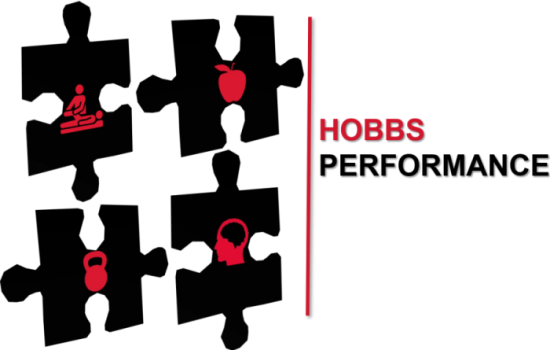










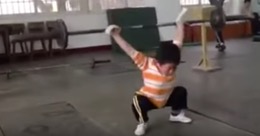
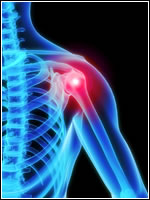

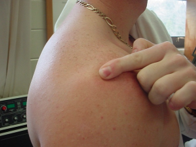





















 Muscle hypertrophy – increasing muscle size/promoting muscle growth. Probably the most popular reason for most people joining gyms and/or beginning lifting (alongside fat loss). Gaining lean muscle mass makes you look better and feel better, it’ll also help with fat loss (muscle tissue is highly metabolic/’energy hungry’) and can lead to improvements in strength and power – and therefore sports performance.
Muscle hypertrophy – increasing muscle size/promoting muscle growth. Probably the most popular reason for most people joining gyms and/or beginning lifting (alongside fat loss). Gaining lean muscle mass makes you look better and feel better, it’ll also help with fat loss (muscle tissue is highly metabolic/’energy hungry’) and can lead to improvements in strength and power – and therefore sports performance.









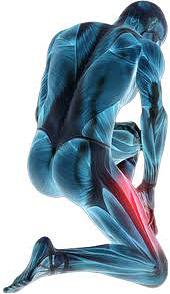


You must be logged in to post a comment.